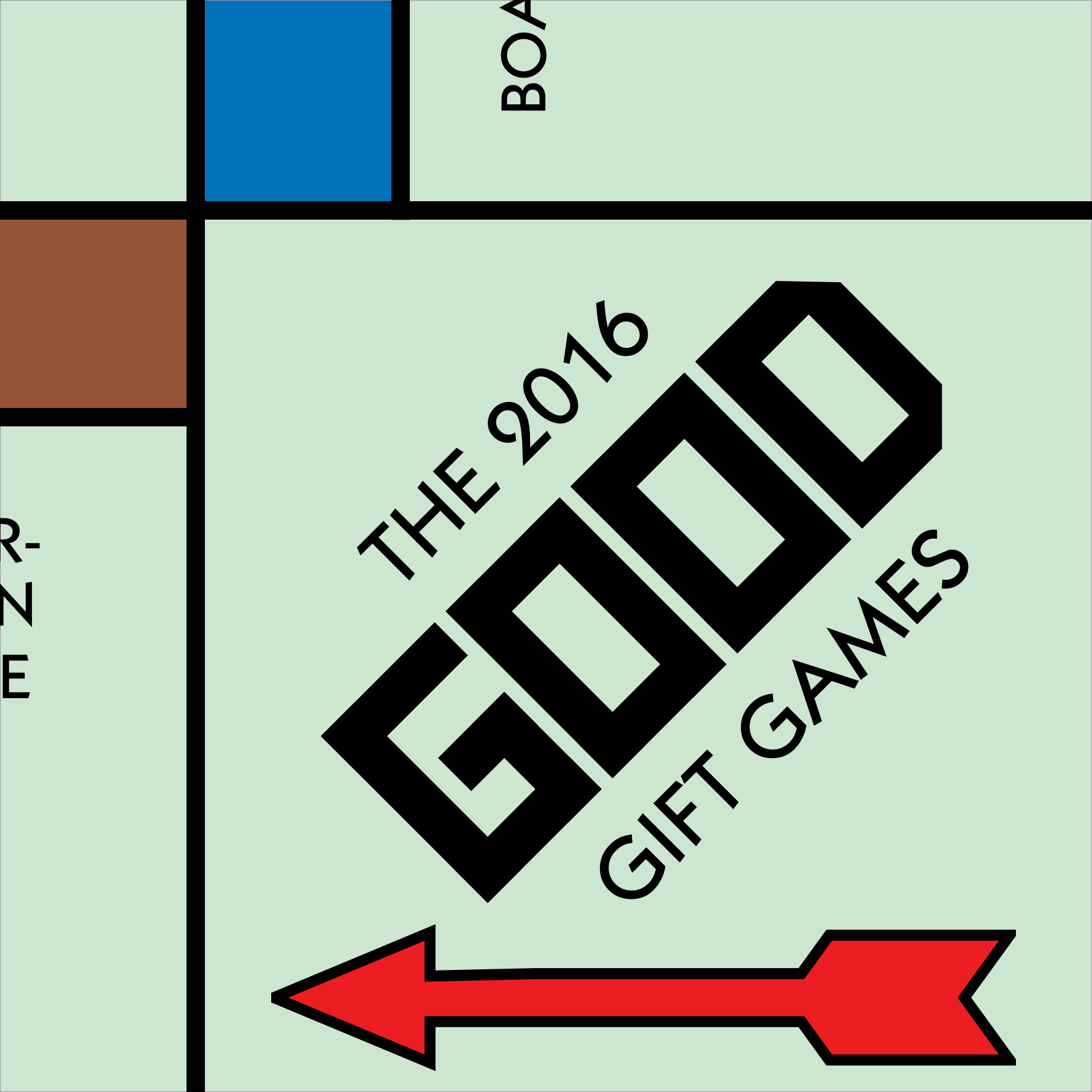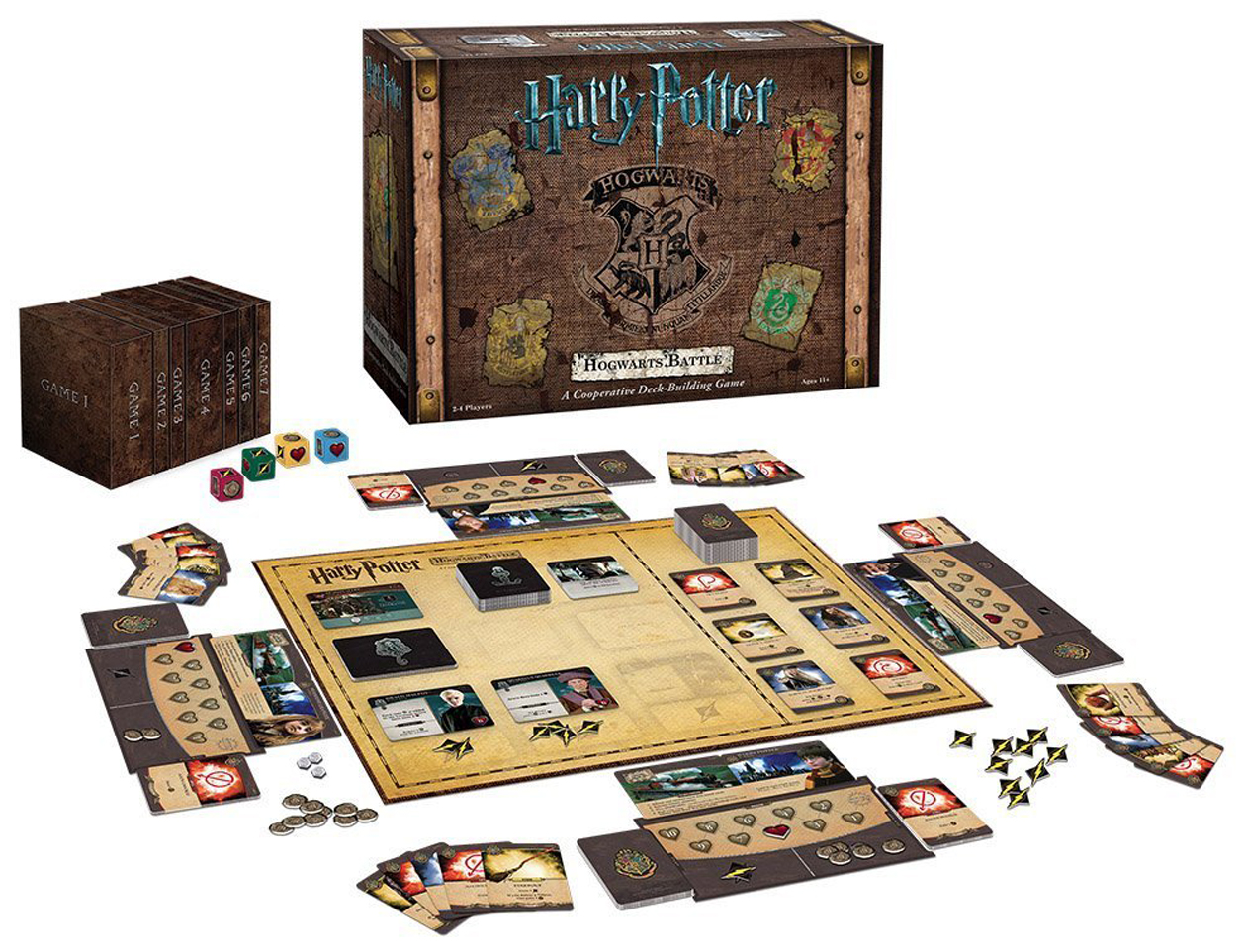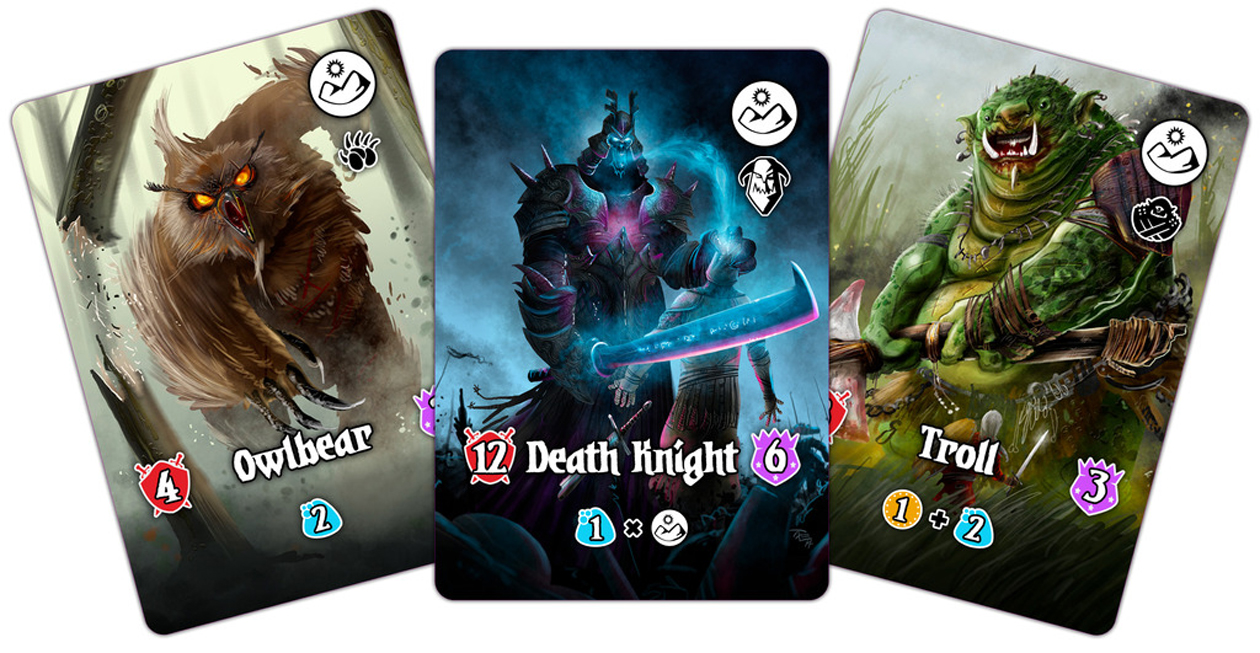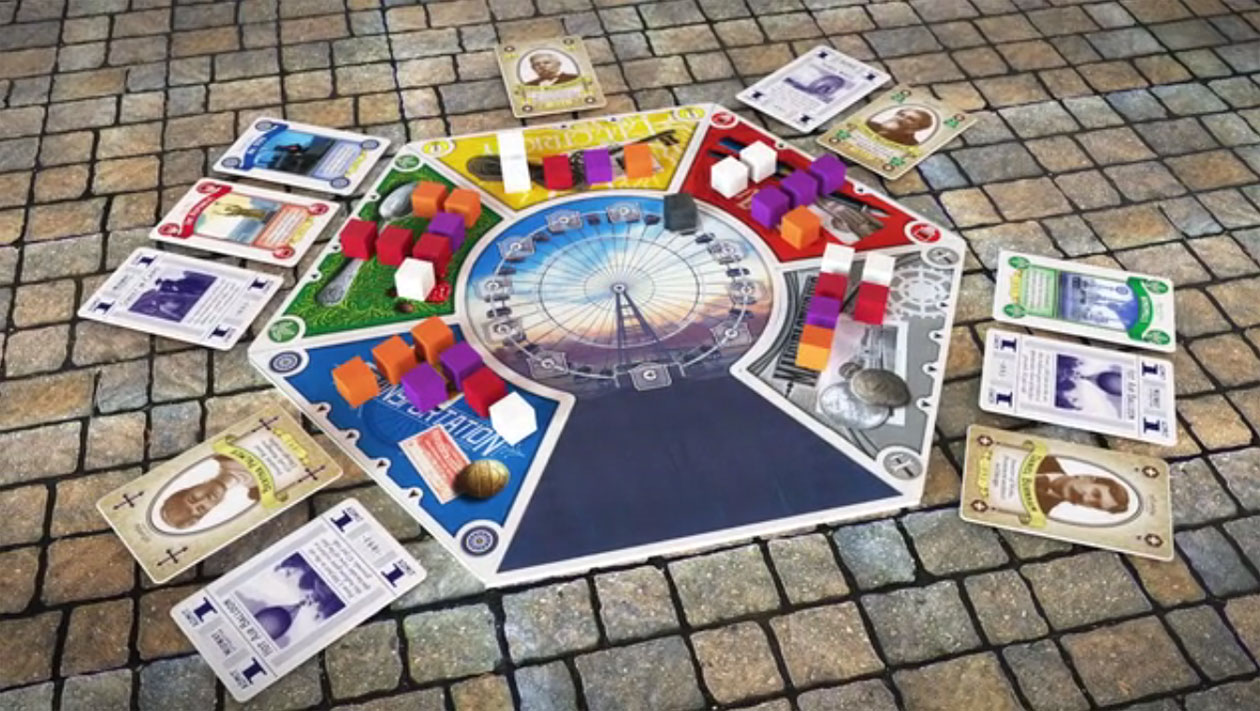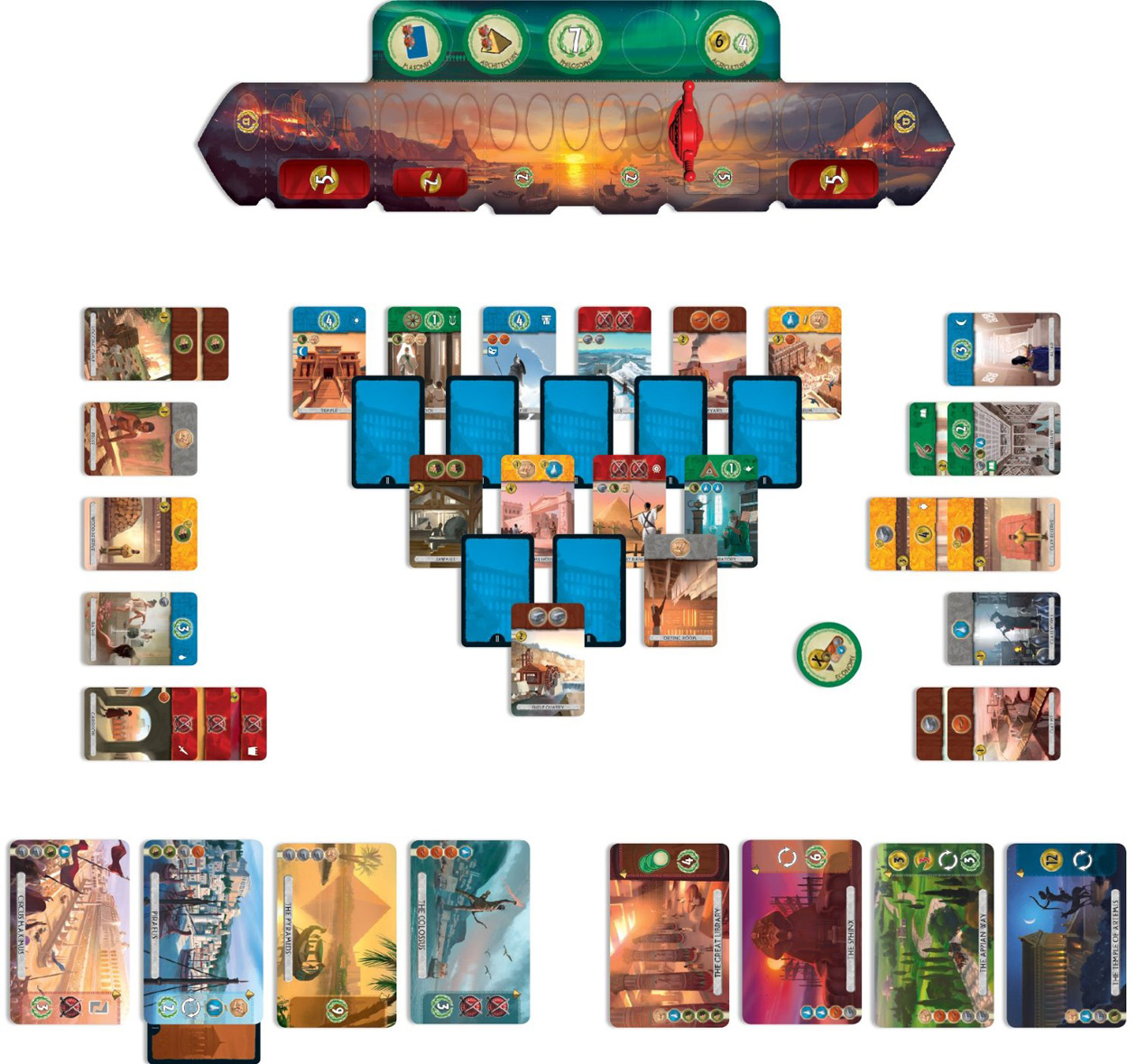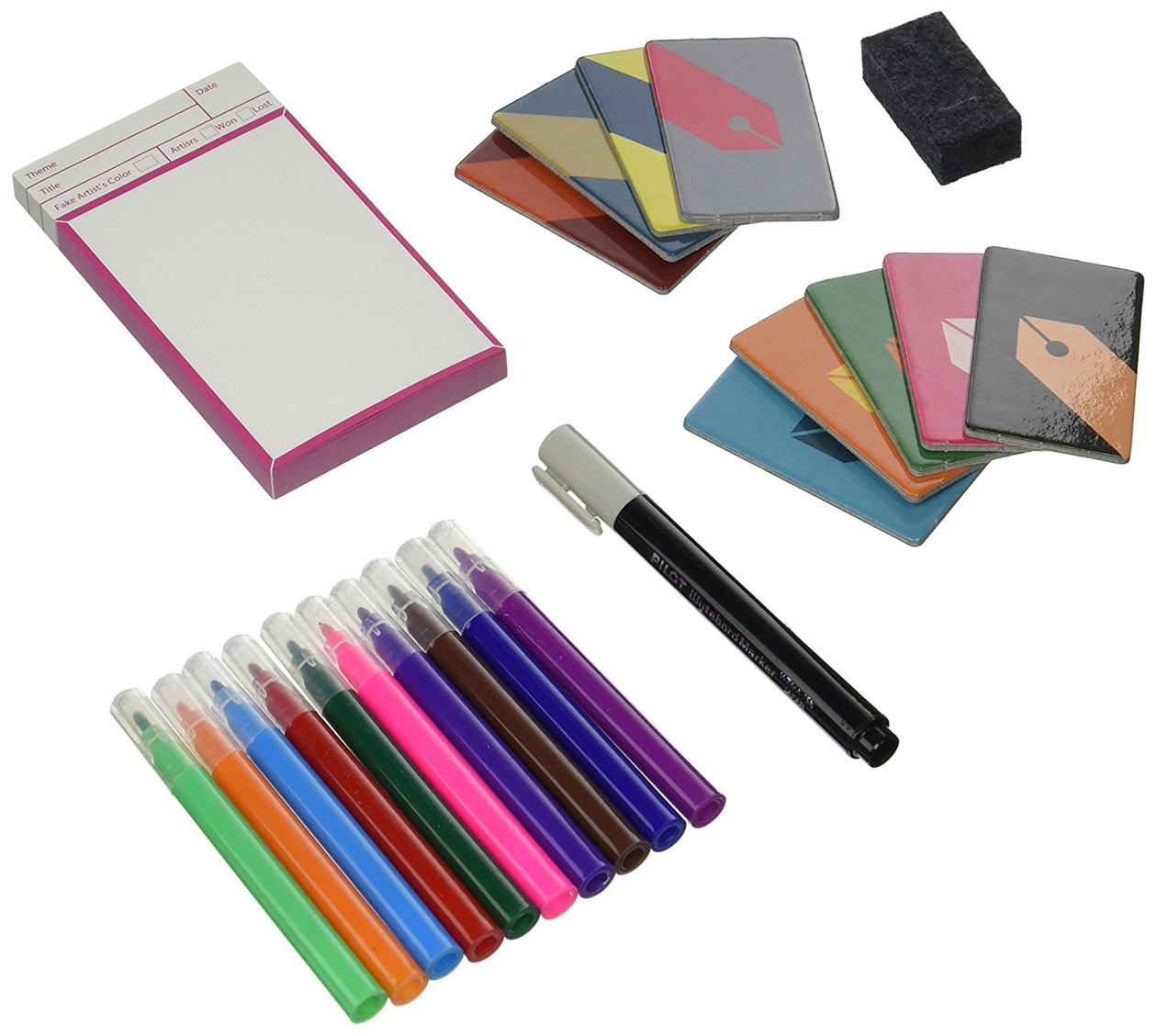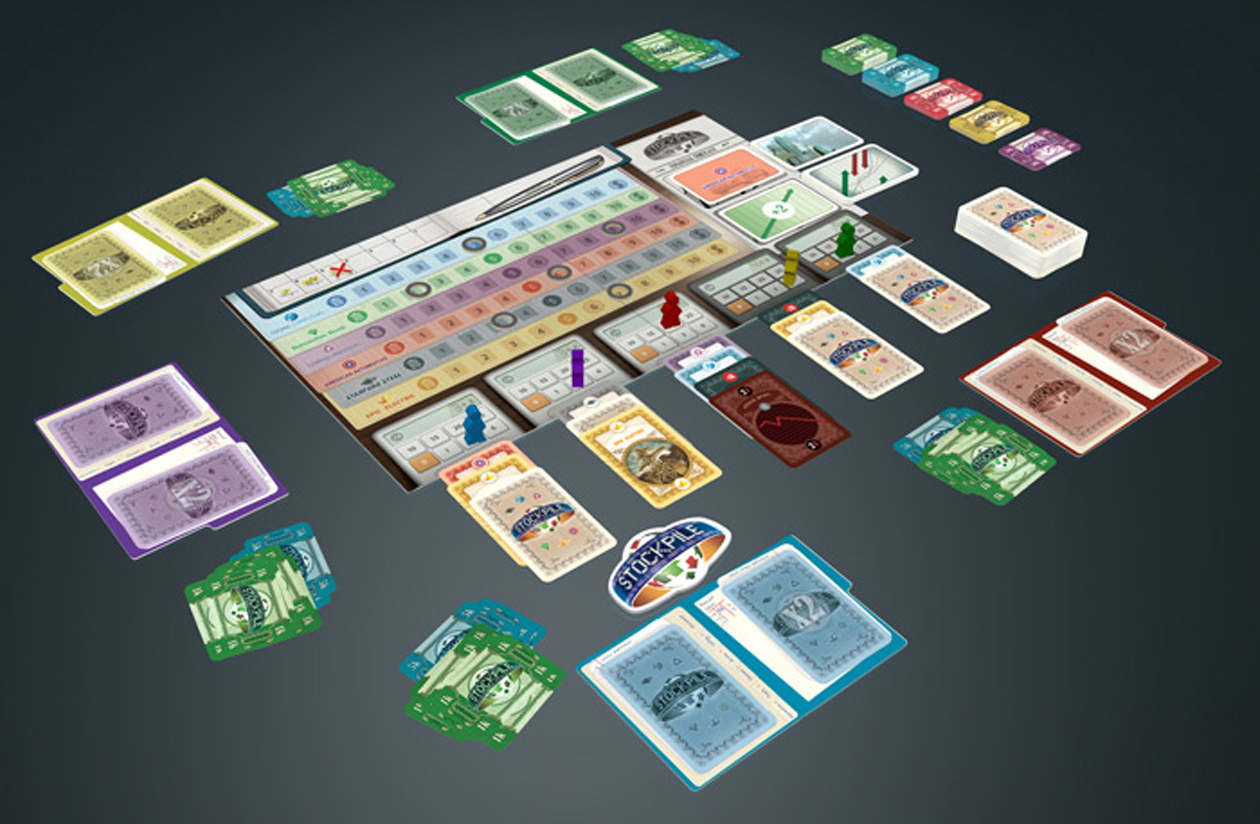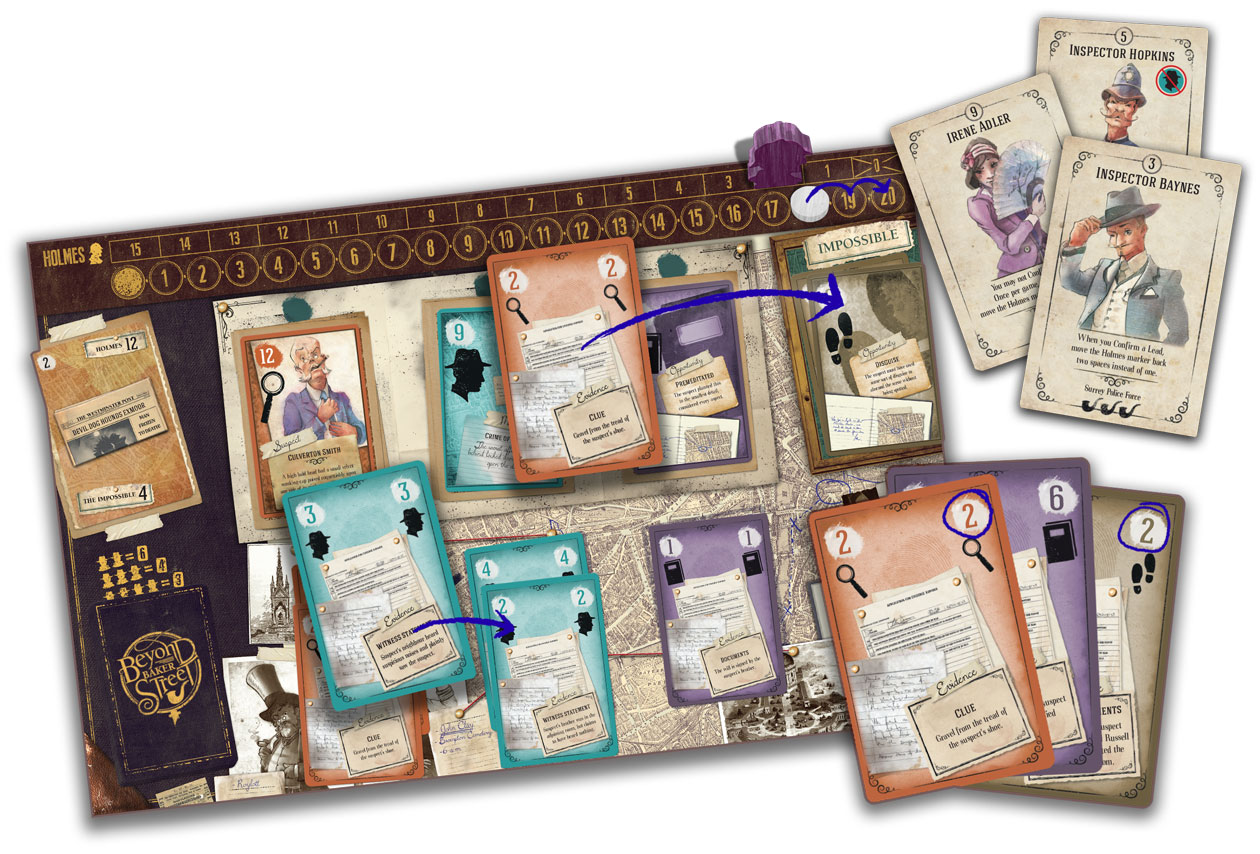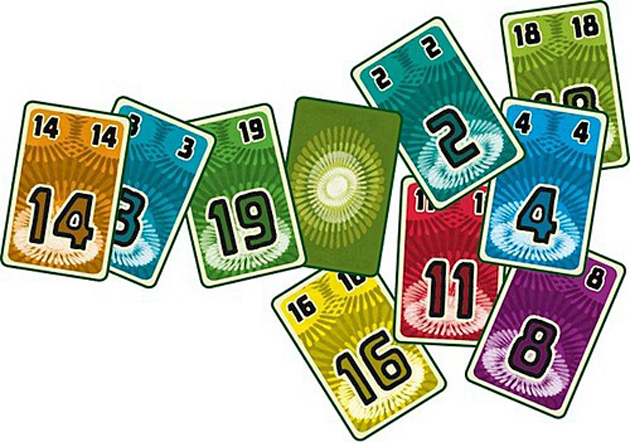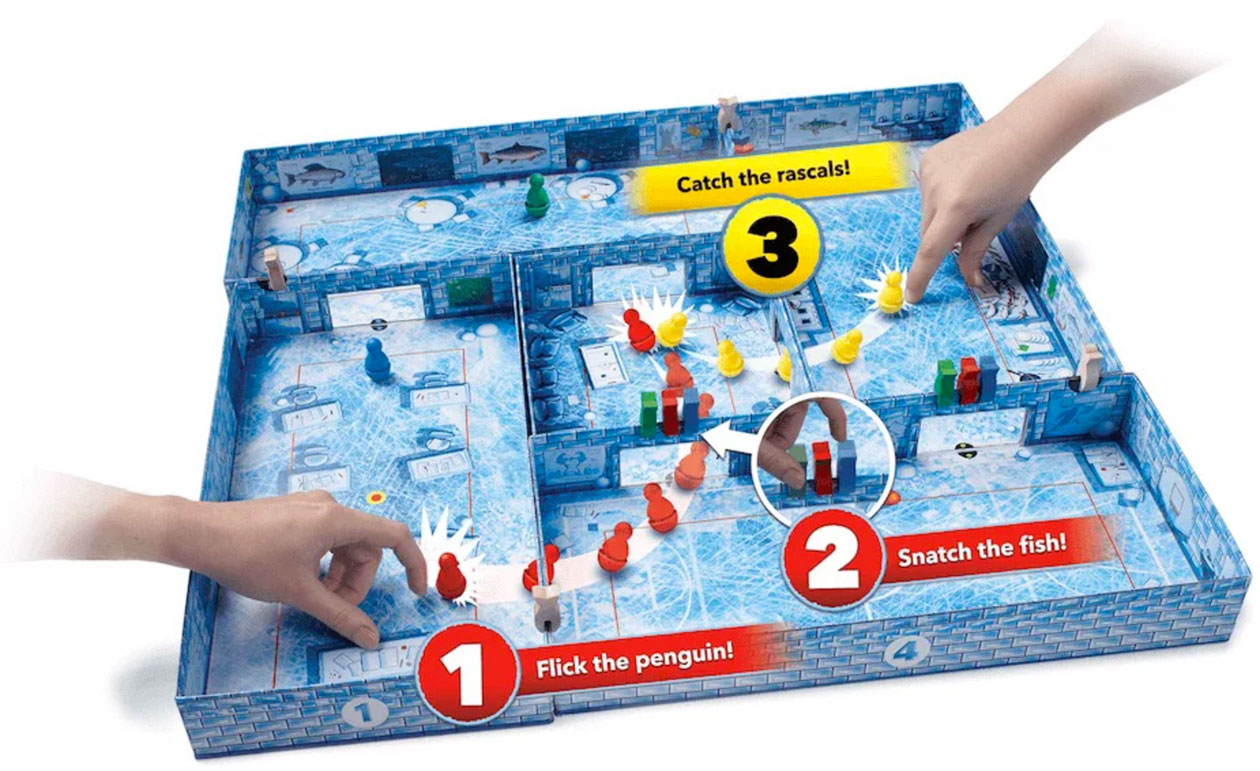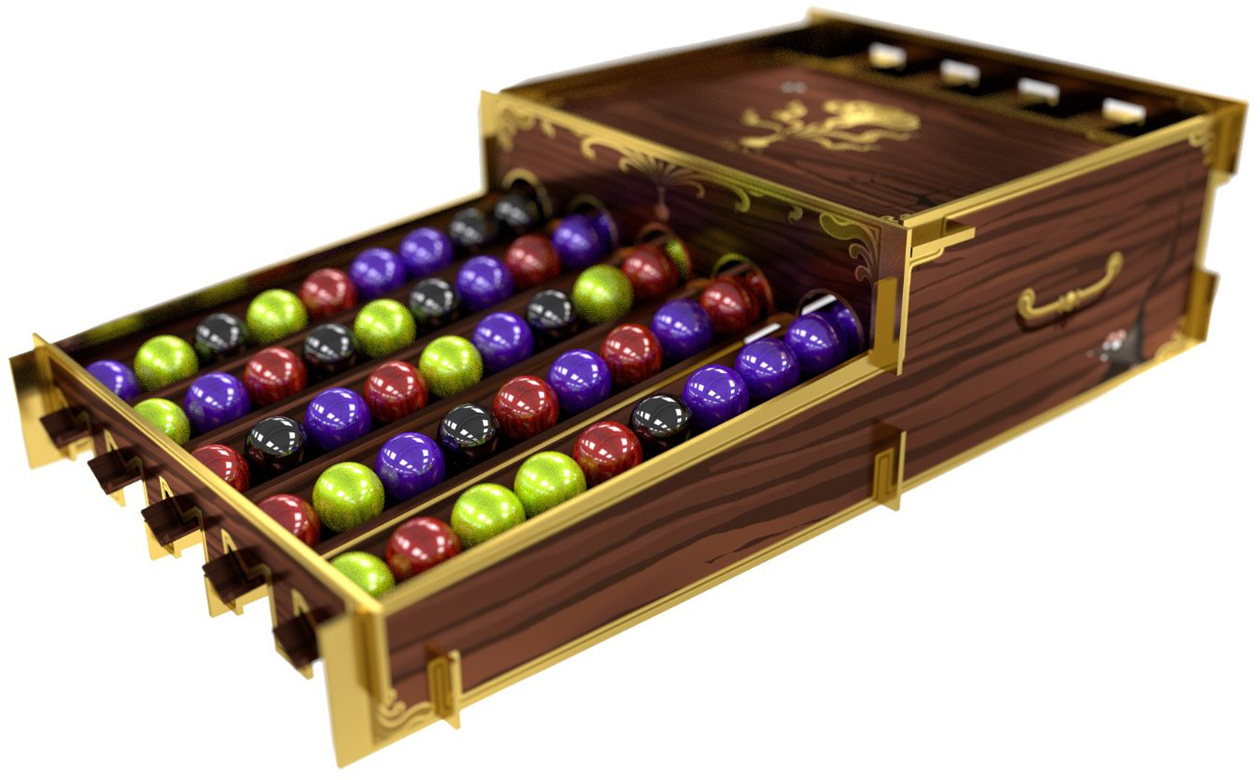In the last month, countless barrels of pixels have been poured into think pieces wondering how, with the population so polarized, people will be able to talk to their families and friends when they gather for the holidays.
Well I’ve got news for you, the Atlantic: This is a problem long-ago solved by those of us who dread any conversation whatsoever. Board games, man! After all, they give you a framework in which to interact with others, but where the discussion revolves mostly around how you should maybe put your phone away for one goddamned second and pay attention when it’s not your turn, Uncle Chet.
And today’s board games are more than just a proxy for human connection. There are so many great designs on the market that it is less a question of finding a good one, and more of choosing from the plethora of options. That’s why I compile an annual Good Gift Games guide comes in, to highlight those board games of the last year or so that are are easy to learn and teach, fun and engrossing to play, and that can be completed in 90 minutes or less.
So pick a few from the list below and come to your gatherings prepared. They may not heal our fractured national psyche, but getting everyone around the table ain’t a bad place to start.
Harry Potter: Hogwarts Battle
Board games based on popular culture are always a dicey proposition, so to speak—doubly so when the property in question is ostensibly for kids. I’m sure we all remember the crushing disappointment of “E.T. The Board Game.” (At 8:58 a.m. on Dec. 25, 1982? We all remember that, right?) Fortunately, Harry Potter: Hogwarts Battle is the real deal, a marriage of great game design with the most popular licence in existence. Players take the role of Harry, Ron, Hermione, and Neville, and work together over seven games (one for each book in the series) to defeat the villains who threaten to plunge the wizarding world into darkness. The first game is simple and short, with players learning the rules as they confront the likes of Professor Quirrell; the second game covers “The Chamber of Secrets,” introducing more cards, enemies, and challenges; and so on all the way to the climatic battle in year seven, when the beleaguered heroes face an onslaught of deadly foes before squaring off against Voldemort himself. The Venn diagram of people who like Harry Potter and people who like games is a single circle, so this is a great gift for anyone you know who likes one or the other.
Designer: Andrew Wolf, Forrest-Pruzan
Publisher: USAopoly
Players: 2-4
Time: 20 minutes (early years) to 90 minutes (later years)
Genre: Deck building, cooperative
Valeria: Card Kingdoms
What if you find everything about the aforementioned Hogwart’s Battle game appealing—the fantasy theme, the fighting of villains, the acquisition of cards—but have no interest in teaming up with others for the betterment of humanity? Well good news, you amoral opportunist, because It’s every duke for himself in Valeria: Card Kingdom. Players recruit citizens from the kingdom—peasants, knights, clerics, and the like—each of which generates resources when their number is rolled on the dice. Those resources can then be spent to hire yet more citizens, or used instead to slay monsters and build domains, both of which will earn the player victory points at the end of the game. Don’t be put off by the sword-and-sorcery theme or the unnecessarily long rulebook—at its core Valeria is an elegant game of resource management, suitable for families and gaming groups alike.
Designer: Isaias Vallejo
Publisher: Daily Magic Games
Players: 1-5
Time: 45 minutes
Genre: Resource management
World’s Fair 1893
In each turn of World’s Fair: 1893, players make a single, simple decision: Into which of five areas should they place a cube? The areas correspond to the major themes of the fair—Electricity, Manufacturing, Agriculture, Transportation, and Fine Arts—and your cubes represent supporters, who advocate for specific exhibits. Supporters allow you to the collect the cards in an area, which also depict the five themes, but the cards in an area might not necessarily be for that area. Agriculture might contain two cards for Manufacturing and one card for Fine Arts, for instance. And that’s a problem, because maximizing your points requires you to have supporters in an area and cards for that area. So you may alternate between staffing an area with supporters, and sending supporters elsewhere to collect the cards you need. Meanwhile your opponents are doing likewise, and seeking every opportunity to thwart your ambitions. Looks like that simple decision isn’t so simple after all! The cards of World’s Fair: 1893 are also replete with historical detail, if that’s your thing. It’s not my thing, to be perfectly honest, but even I found myself reading the exhibit descriptions and supporter biographies between turns.
Designer: J. Alex Kevern
Publisher: Foxtrot Games
Players: 2-4
Time: 45 minutes
Genre: Family strategy
7 Wonders: Duel
Five years ago I urged you to pick up an innovative new card game called 7 Wonders. I still do! It’s a fairly simple civilization building game which has, over the years, become the no. 1 family game on BoardGameGeek. Unfortunately, the game’s greatest strength —that it accommodates a large number of players, up to an almost unheard-of seven—is also a liability, in that it doesn’t work for two. Enter 7 Wonders: Duel. Unlike many two-player-adaptations-of-multiplayer-games, 7W:D doesn’t simply jettison the parts that don’t work for two and then spackle up the cracks. Instead, it preserves everything that makes 7 Wonders great, while replacing the multiplayer mechanics with new systems that work in a head-to-head contest. You still get to experience the epic sweep of history in 30 minutes as you build a civilization from scratch, but now vie directly against another empire—a change that actually has me liking 7 Wonders: Duel better than the original. And that’s saying something.
Designers: Antoine Bauza and Bruno Cathala
Publisher: Asmodee
Players: 2
Time: 30 minutes
Genre: Card drafting
A Fake Artist Goes to New York
One of the hottest trends in the tabletop hobby is “microgames”: minimalist designs with few components and a tiny footprint. Oink Games, for instance, has released nearly a dozen such titles, each no larger than a pack of cigarettes (or the box your vape pen came in, I guess). One of the best, and certainly the most hilarious, is A Fake Artist Goes to New York, an entire party game you can hold in the palm of your hand. At the start of a round, the Quizmaster announces a category (e.g., “Animal”), and then secretly writes the title of the painting (e.g., “Penguin”) on chips that are distributed to the other players. Then, in turn, each player draws a single line on a common sheet of paper, as they collaborate to create a work of art depicting the title. But there is a twist: One player’s chip secretly has an “X” instead of the title. Not knowing what they are supposed to draw, the Fake Artist must bluff when their turn comes around, adding a line that looks like it might fit, somehow. The Real Artists, meanwhile, add lines that signal to others that they know the title, but without making the picture so obvious that the fakers can tell what it is. The end result is 15 minutes of suspicion and hilarity, and a completed work of art that often looks nothing like what it’s supposed to.
Designer: Jun Sasaki
Publisher: Oink Games
Players: 5-10 (best with 6-8)
Time: 20 minutes
Genre: Party, bluffing
Stockpile
There are a million stock market games, but few as realistic as Stockpile, where the people who make the most money are those with access to insider trading. Players wager on the fortunes of six corporations, the share price of which can skyrocket to the point where the stock splits—or craters and bankrupts the company. Knowing what and when to buy is key, but fortunately you know a guy who knows a guy who can tell you a little something about what the market holds. But remember: It’s not enough to make a killing, you also want to see your rivals in shambles. So use your ill-begotten knowledge to not only line your pockets, but sabotage the best-laid plans of your fellow investors. Stockpile succeeds because it aims not to simulate the actual market, but instead induce the thrill of investment (and the agony of selling moments before the price of a stock goes through the roof).
Designer: Seth Van Orden
Publisher: Nauvoo Games
Players: 2-5
Time: 45 minutes
Genre: Economic
Beyond Baker Street
The quintessential detective board game is Clue, but its premise—guests competing against one another to solve a murder—is a bit odd. Wouldn’t it make more sense for the sleuths to collaborate? Beyond Baker Street allows for just that, as players share information in the hopes of jointly solving a crime. Each player is dealt a hand of clue cards representing documents, physical evidence, and witness testimony, but they aren’t allowed to look at them. Instead they hold their hand of cards with the faces pointing outward, such that other players can see them. On a turn you can give one me a hint as to the cards I hold; or, if you think you know what’s in your own hand based on the hints given by others, you can play a card to establish the motive, opportunity, or identity of the suspect. Beyond Baker Street’s emphasis on deductive reasoning and memory make it best suited for those who enjoy puzzles and mysteries, but everyone will enjoy the satisfaction of cracking a case and outwitting the fabled Sherlock Holmes.
Designers: Robin Lees and Steve Mackenzie
Publisher: Z-Man Games
Players: 2-4
Time: 20 minutes
Genre: Deduction, cooperative
Fuji Flush
The formal classification of Fuji Flush is “shedding game”: a game in which the goal is to be the first to get rid of all your cards. The informal classification of Fuji Flush is “filler”: a quick, easy, light game to be played before, between, or after other activities (such as dinner or, ideally, more games). Regardless of how you categorize it, FF shines. The deck contains copious low-valued cards (sixteen 2s, a dozen 3s, nine 4s, and so forth ), with a smattering at the high end of the spectrum. This distribution is problematic, because the only way to lose a card is to play it, leave it face up in front of you for the entire round, and hope that no one plays a higher value before the start of your next turn. This would make it nearly impossible to divest yourself of 2s and 3s, were it not for a neat little twist: When two or more players play the same card, the values are added together. So if I play a 4 and the person to my left plays a 4, both are now considered 8s. A third played 4 brings the value of all of them to 12, and so forth. Thus, several players with low cards can team up to take down a high card, or just to hold fast until they can discard their junk. I’ll be bringing my copy of Fuji Flush to every holiday gathering I attend this year.
Designer: Friedemann Friese
Publisher: Stronghold Games
Players: 5-8 (best with 6+)
Time: 15 minutes
Genre: Card
Ice Cool
Ice Cool is the latest entry in that most venerable of holiday genres: “Children’s Games That Adults Get Way Into After a Third Glass of Wine.” In this installment, players are flicking (like, using their index fingers to physically strike) small penguin figures to propel them around an ice school (get it?). The school has several rooms, and three of the players compete to be the first to travel through the connecting doorways. The fourth penguin, meanwhile, is the school’s “hall monitor” (trust me, this all makes sense after a bottle of rosé), and the player’s goal is to catch the other students as they careen down the halls. With practice you can apparently curve your penguins around corners and even jump them over walls, but you’ll spend most of your early games ricocheting them off doorframes while biting back the swears. It’s still a grand time, though—especially for the kids, who will love trouncing their thick-fingered and slightly inebriated elders.
Designer: Brain Games
Publisher: Brain Games
Players: 2-4
Time: 20 minutes
Genre: Dexterity, children’s
Potion Explosion
We started this list with the most prestigious school for aspiring mages, and we’ll end it with the least. At the Horribilorum Sorcery Academy for Witty Witches and Wizard, players acquire four ingredients—unicorn tears, fairy dandruff, ogre mucus, and dragon smoke—and combine them to make mystical brews of untold power. That’s the backstory, anyway. In practice, players take turns plucking marbles from the Dispenser, a clever contraption with five tilted columns. When a marble is taken, the one above it in the column rolls forward to fill the vacancy, “clacking” against the one below. And when two marbles of the same color clack (our term; not canon), you get the name of the game: a Potion Explosion. All marbles involved in an explosion are also taken by the active player, which may result in yet more clacks and additional ingredients claimed. Indeed, through the use of your previously created potions—each of which can be quaffed for some in-game benefit—a single pick from the Dispenser can net you a dozen marbles or more. Potion Explosion has been described as an IRL Candy Crush, but I prefer to think of it as a very clever set-collection game that works as well for two players as it does for the whole family.
Designers: Stefano Castelli, Andrea Crespi, Lorenzo Silva
Publisher: Horrible Games
Players: 2-4
Time: 45 minutes
Genre: Family
